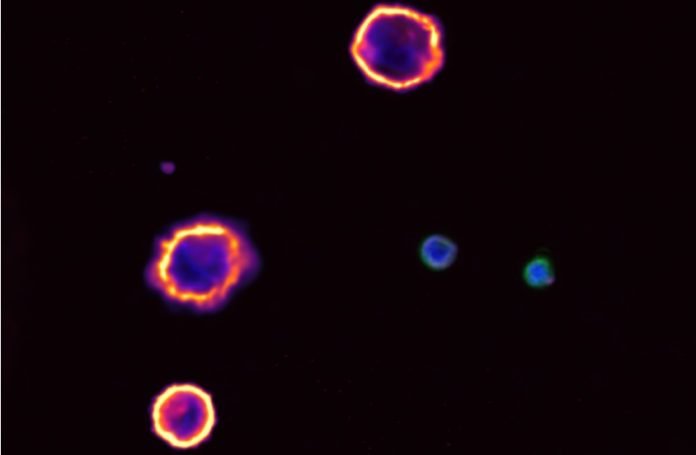
Researchers at UNSW Sydney are developing safer, less invasive approaches to biopsy tumors.
Being told that you have a tumor is challenging enough, without the endless treatments and medical procedures that follow.
One of these procedures is a solid tumor biopsy, which can be painful, invasive and sometimes not even possible depending on the location of the tumor.
Not to mention that if you’re located in a regional or rural area, it could mean a long journey to the closest major hospital and specialist doctors.
“If you’re in a rural area and you need to have a biopsy, you need to travel to a major centre because essentially what you’re having is an invasive procedure,” said Dr John Lock, who is a cancer researcher at UNSW Medicine & Health and the Ingham Institute for Applied Medical Research.
What if you could get the same information about your tumor with a simple blood draw? That’s where the liquid biopsy comes in.
What is a liquid biopsy?
Nowadays, clinicians customize treatments to the patient and their particular cancer as much as possible.
To do so, they need to understand the biomolecular make-up of the cancer and its characteristics to then tailor the best personalized therapy.
Most people are familiar with a solid tumor biopsy for such biomolecular analysis, which involves surgically removing a small part of the tumor and sending it to a pathology lab.
This allows your doctor to understand characteristics about the tumor, for example the grade and types of genetic mutations, to inform the diagnosis and treatment plan.
An alternative test is the liquid biopsy, which is performed using blood and other bodily fluids. Cancers release entities such as genetic material (DNA) and tumor cells into the blood stream, which are called circulating tumour DNA (ctDNA) and circulating tumor cells (CTCs).
“The liquid biopsy is a surrogate to a solid tissue biopsy,” said Associate Professor Therese Becker, who leads liquid biopsy research at the Ingham Institute for Applied Medical Research and UNSW’s South West Sydney Clinical Campus. “It provides information to better guide clinical treatment of patients.”
Why are liquid biopsies useful?
Liquid biopsies, which have been gaining traction over the last decade, have a range of benefits for patients. Collecting the sample is simpler and safer, making the experience more straightforward for the patient.
“It transforms the experience for the patient. A liquid biopsy means that essentially, you go to your GP and the sample travels, not you,” Dr Lock said.
These tests can also serve different purposes. Liquid biopsy approaches are being developed to be part of early screening and detection of cancers, including multi-cancer screening blood tests.
The liquid biopsy can also allow monitoring of a patient’s cancer over time, which is what Dr Lock and A/Prof. Becker’s research focuses on.
Tracking tumor progression
Cancers are incredibly complex to treat because they evolve over time and require new therapeutic approaches.
It is not feasible to perform solid biopsies regularly to track a cancer’s progression, particularly if it has spread to distant organs or the bone.
“We know that a cancer changes. A person gets diagnosed with cancer and then gets treated with different therapies. A year or two years down the track, that person’s cancer may have changed dramatically,” A/Prof. Becker said.
Dr Lock added, “If we rely on solid biopsies, we lose visibility on how the cancer has changed. We lose track of it.”
A/Prof. Becker and Dr Lock are collaborating to develop liquid biopsy approaches to monitor a patient’s cancer over time.
Clinicians can then use the information about the cancer to adapt the treatment plan. In their research, A/Prof. Becker and Dr Lock are answering questions like: how can we easily tell CTCs apart from other cells? And how can we get as much information as possible from each CTC?
Taking liquid biopsies into mainstream clinical practice
“Liquid biopsy is getting more and more embedded in clinical practice overseas, but Australia is still behind,” A/Prof. Becker said.
Despite the benefits, liquid biopsies are still not a standard clinical tool in Australia.
According to A/Prof. Becker, there are several barriers to be overcome before this is the case. These include refining the liquid biopsy technology, collecting clinical trial data on a large scale, and securing buy-in from clinicians and patients.
The next few years will be critical to move liquid biopsies from bench to bedside in Australia. A/Prof. Becker added, “Luckily, it’s a very fast and forward-moving field.”
Written by Maddie Massy-Westropp.



